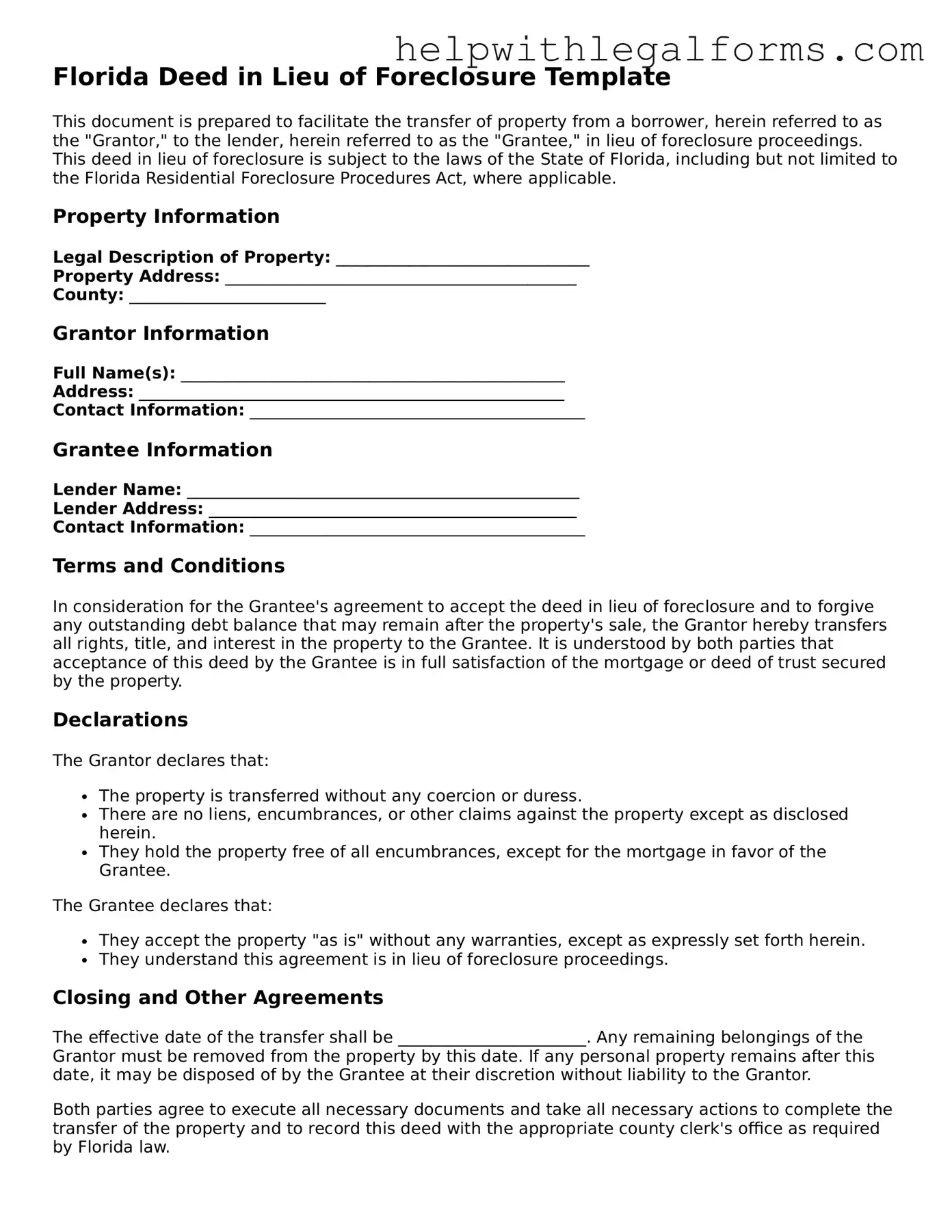Florida Deed in Lieu of Foreclosure Template
This document is prepared to facilitate the transfer of property from a borrower, herein referred to as the "Grantor," to the lender, herein referred to as the "Grantee," in lieu of foreclosure proceedings. This deed in lieu of foreclosure is subject to the laws of the State of Florida, including but not limited to the Florida Residential Foreclosure Procedures Act, where applicable.
Property Information
Legal Description of Property: _______________________________
Property Address: ___________________________________________
County: ________________________
Grantor Information
Full Name(s): _______________________________________________
Address: ____________________________________________________
Contact Information: _________________________________________
Grantee Information
Lender Name: ________________________________________________
Lender Address: _____________________________________________
Contact Information: _________________________________________
Terms and Conditions
In consideration for the Grantee's agreement to accept the deed in lieu of foreclosure and to forgive any outstanding debt balance that may remain after the property's sale, the Grantor hereby transfers all rights, title, and interest in the property to the Grantee. It is understood by both parties that acceptance of this deed by the Grantee is in full satisfaction of the mortgage or deed of trust secured by the property.
Declarations
The Grantor declares that:
- The property is transferred without any coercion or duress.
- There are no liens, encumbrances, or other claims against the property except as disclosed herein.
- They hold the property free of all encumbrances, except for the mortgage in favor of the Grantee.
The Grantee declares that:
- They accept the property "as is" without any warranties, except as expressly set forth herein.
- They understand this agreement is in lieu of foreclosure proceedings.
Closing and Other Agreements
The effective date of the transfer shall be _______________________. Any remaining belongings of the Grantor must be removed from the property by this date. If any personal property remains after this date, it may be disposed of by the Grantee at their discretion without liability to the Grantor.
Both parties agree to execute all necessary documents and take all necessary actions to complete the transfer of the property and to record this deed with the appropriate county clerk's office as required by Florida law.
Signatures
In witness whereof, the parties have executed this deed in lieu of foreclosure on the dates written below.
Grantor Signature: ______________________________ Date: ________________
Grantee Signature: ______________________________ Date: ________________
